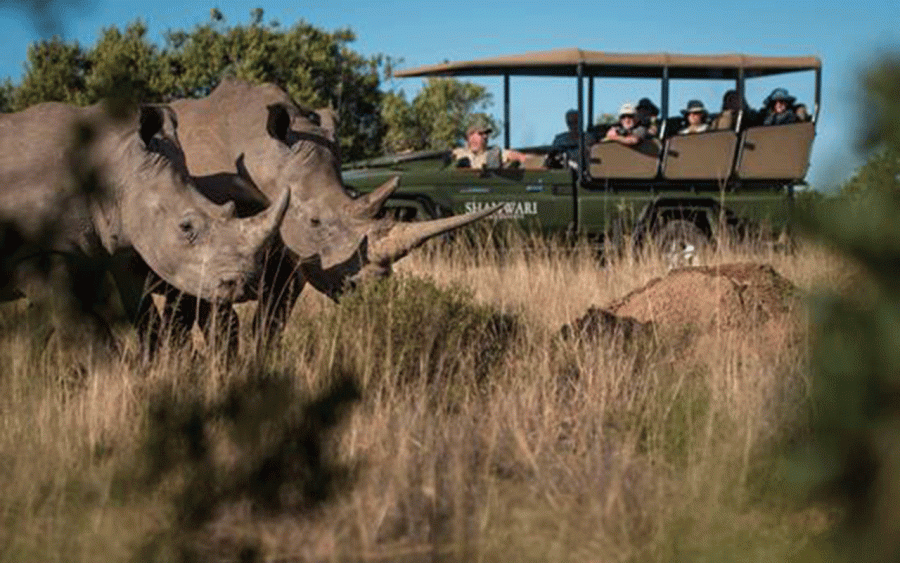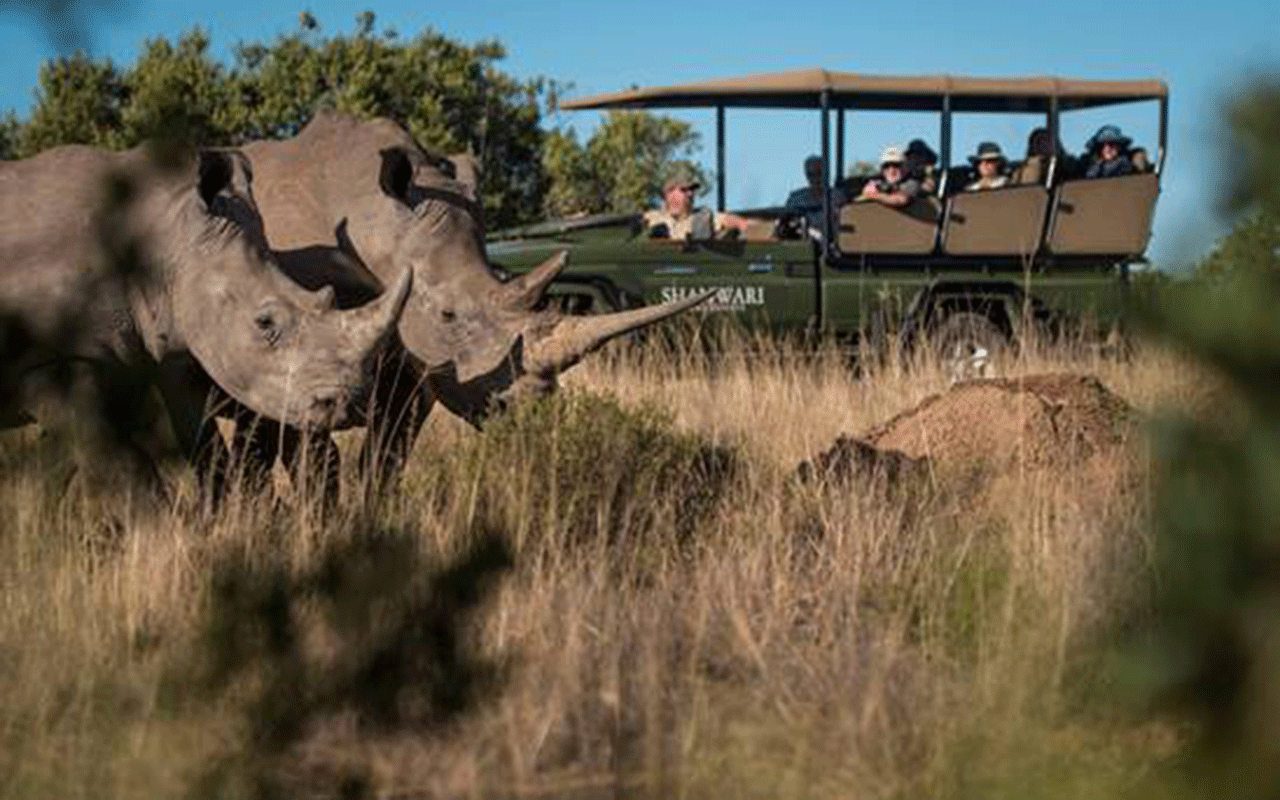
Saving Rhinos is About More Than Just Stopping Poachers
Saving Africa’s rhinos will require a multidimensional strategy, with private game reserves and national parks cooperating and anti-poaching efforts working in tandem with education campaigns, according to Joe Cloete, the CEO of Shamwari Private Game Reserve in the Eastern Cape. Cloete says this isn’t a new approach, but it is one that needs to be developed […]

Saving Africa’s rhinos will require a multidimensional strategy, with private game reserves and national parks cooperating and anti-poaching efforts working in tandem with education campaigns, according to Joe Cloete, the CEO of Shamwari Private Game Reserve in the Eastern Cape.
Cloete says this isn’t a new approach, but it is one that needs to be developed and expanded.
“It’s what General Johan Jooste did in the Kruger National Park and what he details in his book Rhino Wars, where the national park integrated its anti-poaching efforts with those of nearby private reserves. He understood the need for education campaigns to get the surrounding communities onside and challenge the myths that create demand for rhino horn.”
He says this approach – tried and tested at the Kruger National Park – is being rolled out in other regions.
“For example, at Shamwari we cooperate with all the surrounding reserves, including the Addo Elephant National Park, sharing intelligence and expertise. We also do a lot of community work, on the reserve as well as running outreach programmes. The aim of these is to inform the community that a live rhino is an asset that keeps bringing employment and income to the region. One that’s killed for its horn brings little, if any, benefit to surrounding communities.”
But, says Cloete, even well-co-ordinated efforts by game reserves, national parks and effective community-engagement programmes aren’t enough. An intensive, concerted international science-based campaign, involving governments, global conservation NGOs is required to debunk the fictions about rhino horn. They should use every tool at their disposal including influencers and social media.
“While it may be difficult to convince a current generation that long-held beliefs about rhino horn curing cancer or increasing virility are untrue, breaking the chain that perpetuates these fallacies in successive generations could be more effective.”
Cloete says that events such as World Rhino Day (22 September) are important to focus attention on rhino conservation and that while poaching is an immediate and serious threat, it is not the only one.
“At the moment the poaching of animals for their horns is rightly the primary focus of rhino conservation, but there’s little point in winning this battle if we lose the war. Human encroachment on rhino habitat is also a problem and over the long-term ensuring sufficient wilderness spaces for rhinos to survive and flourish is also important.”
It’s an objective Shamwari has championed for the past 30 years since it began buying up farms and restoring the land to the wilderness it had once been. Fittingly rhinos were an important part of this story.
Along with elephant and hippo, white rhino were one of the first animals to be re-introduced to what had once been one of southern Africa’s richest wildlife areas. As the large herbivores began moving though what had been chicory and wheat fields these ‘engineers of the bush’ began restoring the soil, fertilising it with their manure and dispersing seeds.
As the land was restored it could support more species. Black rhino and buffalo were brought back in 1993, with cheetah, lion and brown hyena being reintroduced in 2000 and serval and leopard the next year.
“Rhino Day focuses attention on a species under threat, but to conserve these magnificent and important animals in the wild, we not only have to tackle the immediate issues but also holistically consider other factors that put rhino populations at risk,” says Cloete.
Partnerships key to protecting rhino population
The South African government says the private sector is currently conserving about 60% of South Africa’s national herd of rhino.
“Therefore, government takes building partnerships and relationships of utmost importance in the conservation of this iconic species,” Minister of Forestry, Fisheries and the Environment, Barbara Creecy, said on Thursday.
Joined the international community in observing World Rhino Day, the Minister said the private sector is playing an increasing role in rhino conservation in SA and the rest of the continent.
South Africa acknowledges that despite the pressures of rhino poaching, loss of habitat and vulnerability to climate change effects, the country remains the world’s most important and potentially influential rhino range State, she said.
A high-level panel report has noted that the proportion of rhino on private land has grown from about 30% in 2012 to about 60% at present, complemented by anti-poaching successes.
Creecy’s department, in cooperation with provincial conservation authorities, South African National Parks (SANParks), private rhino owners and the South African Police Service (SAPS) — has been focusing on a more proactive and integrated approach.
This approach builds on existing initiatives and blurs the distinction made between national, provincial, and private parks, while increasing situational awareness and sharing of information.
Over the last year, conservation and anti-poaching efforts have intensified countrywide as a joint effort is made by the collaborative initiatives of State-owned conservation areas, government and private landowners to reduce the poaching of rhino in South Africa.
Technology helps in conservation
The use of the ‘Cmore’ situational awareness platform has greatly helped in the fight against poaching, said Creecy.
Through this single technology platform, all role players are able to collaborate, making use of real-time insights and analytical capability, linking, for example, camera traps and ranger patrols, while integrating a range of other systems.
“Information collected and communication flows through the EEFC continues to support the teams at both a tactical level and strategic level in both the private and public sector.
“Our analytical capabilities have also improved, resulting in the increased capacity to identify those involved in rhino poaching and trafficking ,and improved and expanded investigations by multi-disciplinary teams.
“From a biological management point of view, the department – in partnership with the Rhino Management Group and all relevant stakeholders – is in the process of revising the Biodiversity Management Plans (BMPs) for black and white rhinos respectively,” Creecy said.
Recently, 27 rhino were successfully translocated from South Africa to the Zinave National Park in Mozambique.
“This landmark and pioneering rewilding initiative is the result of a partnership between Mozambique’s National Administration for Conservation Areas (ANAC), Peace Parks Foundation and Exxaro Resources, in collaboration with the governments of South Africa and Mozambique.
“Working to a two- to three-year timeline, the project is already well on its way to relocating more than 40 rhino to Mozambique in a series of highly co-ordinated and carefully managed rewilding operations. The first 20 white rhino and seven black rhino introduced to Zinave earlier this year are thriving,” Creecy said. – SAnews.gov.za
